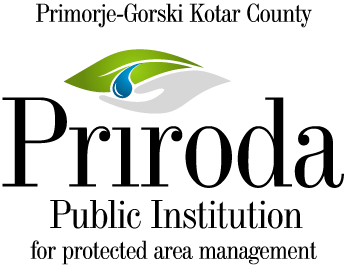MICROBE DAY IN CPGK Almost daily I pass by the Leaning Tower located in Rijeka’s Old Town. In the past several months my attention has been drawn to a dark greyish-brown patina that has spread over the tower’s outward leaning wall. RELIEF-LIKE SCULPTURED PATINA ON RIJEKA’S LEANING TOWER Ever since I have become increasingly wrapped up in the phenomenon of so-called soil crusts, I have been able to spot them everywhere on the ground and, not infrequently, I have begun to notice similar and related crusts on rocks, walls and facades as well. The crusts found on these vertical stone surfaces differ somewhat from those found on soils. However, they all seem to have something in common. Namely, microorganisms play an important role in the formation of both soil crusts and patinas on walls and rocks. Almost every day on my way to work, I pass beneath the bulging part of the Leaning Tower in Rijeka’s Old Town. Interestingly, the tower’s stone facade was thoroughly restored some ten years ago. Although I cannot clearly remember what the tower looked like before that, I assume that the unsightly dark patina that would have covered the surface of the tower was removed, revealing once again the white colour of the underlying limestone (or was the tower like that even before it was restored?). In any case, the dark patina is still there, on the outward leaning part of the tower. Whether the current patina formed from remnants of the patina that was on the wall prior to cleaning and restoration or whether it formed after the restoration of the tower, I do not know, but I will try to find out from the conservation department. What I find particularly interesting is the fact that the current patina on the tower’s stone facade is relief-structured (sculptured) and rather hard. It is made up of irregular, slightly crooked but mostly horizontally flowing whorls that create what look like tiny basins, a few millimetres deep, over which and through which rain cascades, teeming with dissolved minerals and leaving an unusual track when it drains. Probably we are dealing with the phenomenon of mineralised crusts that are formed as water cascades down a facade and rain-water is (re)mineralised by dissolved substances washed out of the plaster and stone of the facade. As confirmed by the reports of many researchers, a special role in this process is played by microorganisms and the biofilm on the surfaces of such crusts and patinas. The process is somewhat similar to the deposition of dripstone formations in caves or the deposition of travertine on travertine cascades, as well as to the recrystallization of minerals on concrete structures, which can also be frequently seen in the Rijeka area. Topic: nature in town, hidden worlds, Gaea, microbes, microbe day in CPGK Key words: patina on cultural and historical monuments, biofilms, Leaning Tower, Rijeka Marko Randić
|





